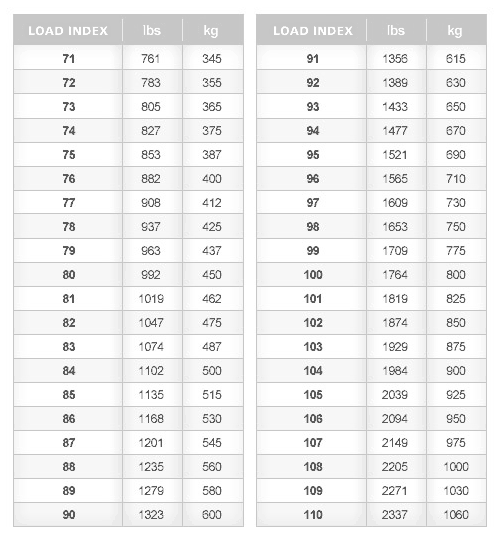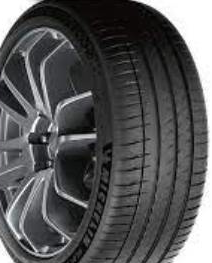
The load index is an assigned number ranging from 0 to 279 that corresponds with the load-carrying capacity of a tire. Most passenger car tire load indices range from 75 to 105 --- although some passenger tires carry more.
For example, for a tire with the size of 235/55R17 99H, the load index is 99.
This is the tire size's assigned numerical value used to compare relative load carrying capabilities. The higher the tire's load index number, the greater its load carrying capacity.
97 = 730 kg (1,609 pounds)
98 = 750 kg (1,653 pounds)
99 = 775 kg (1,709 pounds)
100 = 800 kg (1,764 pounds)
A tire with a higher load index than that of the Original Equipment (OE) tire indicates an increase in load capacity.
A tire with a load index equal to that of the Original Equipment tire indicates an equivalent load capacity.
A tire with a lower load index than the Original Equipment tire indicates the tire does not equal the load capacity of the original and should not be considered for use or installation on the vehicle.
The Load Index on any vehicle needs to be maintained in order for the tire to be capable of carrying the maximum load of the vehicle as designed by the manufacturer.

 CAR & MINIVAN
CAR & MINIVAN PERFORMANCE
PERFORMANCE LIGHT TRUCK
LIGHT TRUCK WINTER
WINTER EV COMPATIBLE
EV COMPATIBLE

 SHOP BY VEHICLE
SHOP BY VEHICLE SHOP BY TIRE SIZE
SHOP BY TIRE SIZE SHOP BY BRAND
SHOP BY BRAND VIEW ALL TIRES
VIEW ALL TIRES CLEARANCE TIRES
CLEARANCE TIRES